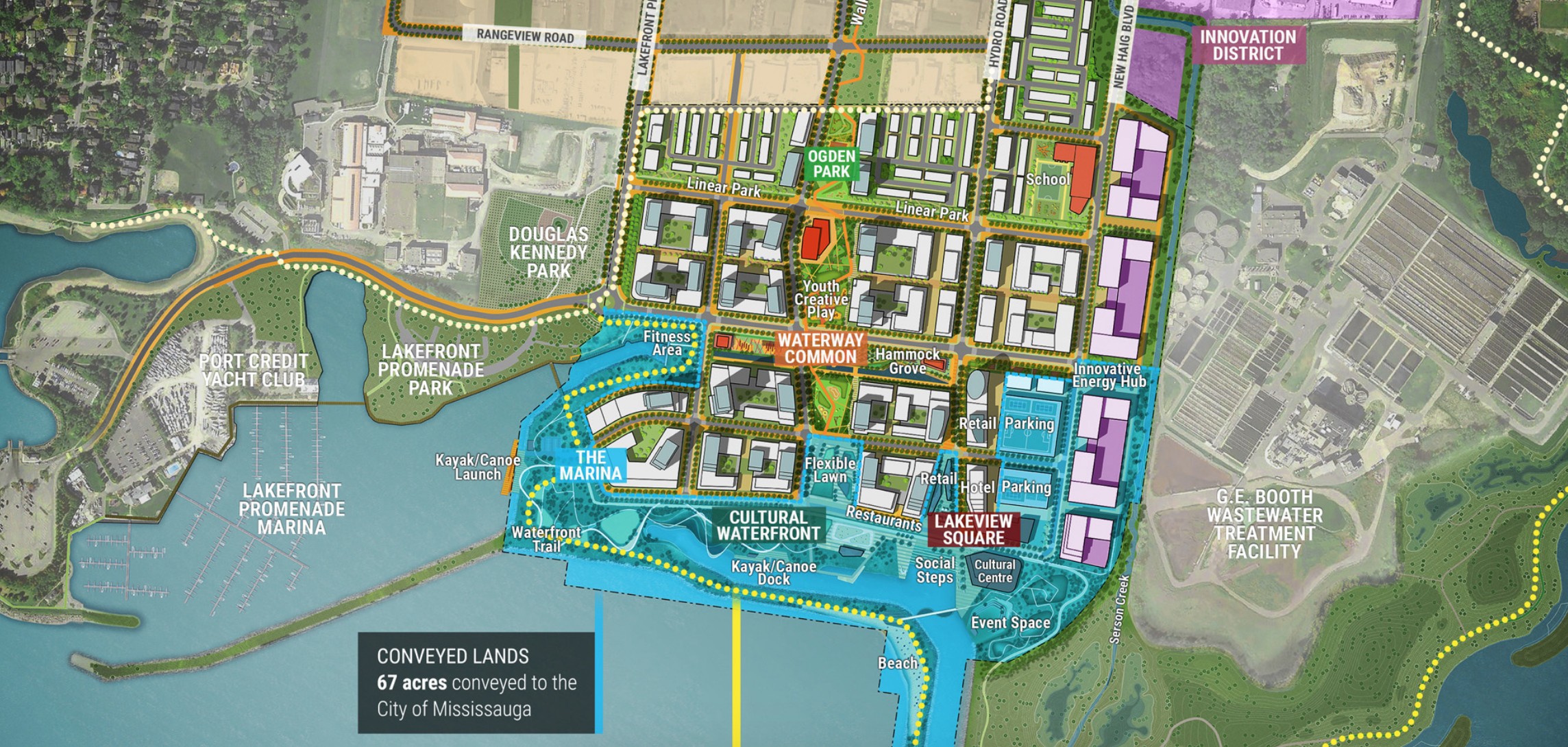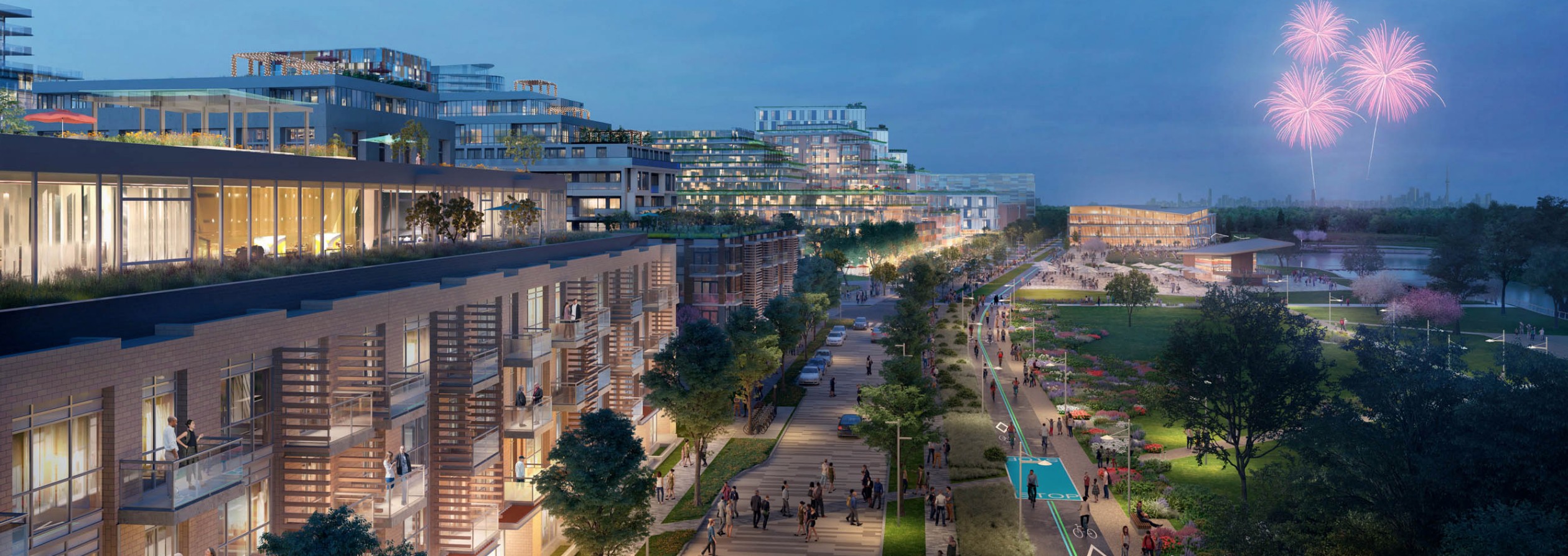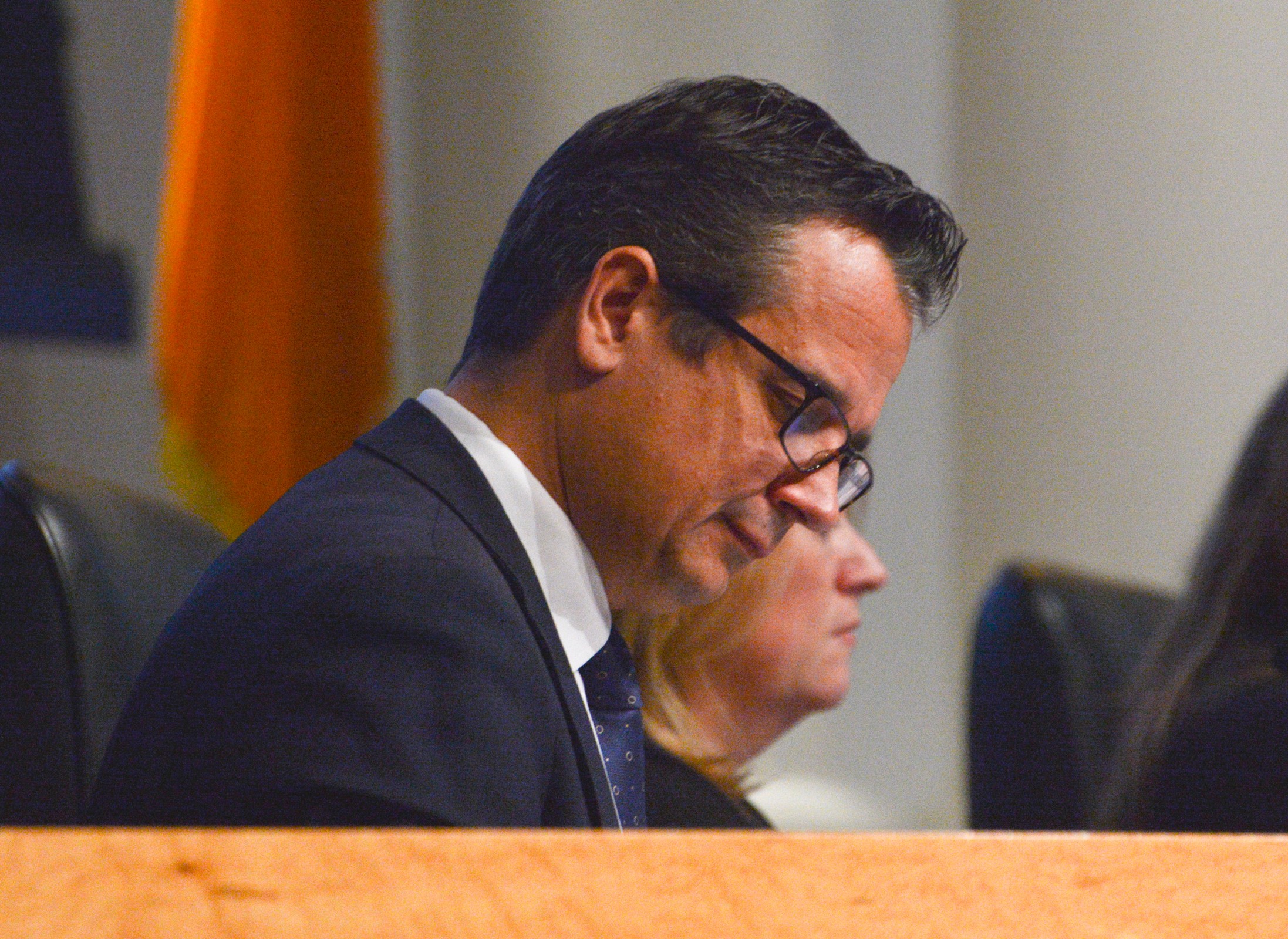
Lakeview Village under threat of “foul odours” from wastewater treatment site
The models and images of what Lakeview Village will look like are nothing short of stunning. Pools of water, views of Lake Ontario and sweeping parklands are dotted with houses, families playing and shopping destinations. It conjures up an image which will, naturally, have people scrambling to make a downpayment.
However, as it stands, those idyllic scenes could be shattered whenever the wind blows the wrong way.
The Lakeview Village development on Mississauga’s waterfront is one of the most talked about projects in the city. Alongside plans such as the Hurontario LRT, it is a symbol of the denser, modern city emerging from the villages which once existed as a suburb of Toronto.

Planned for the site of the former Lakeview power generation plant between Port Credit and Long Branch, the project was first known as Inspiration Lakeview. In its first incarnation, it was a resident powered call for density and modern living. As with so many projects, though, cash hungry developers have taken over the concept, adding significant height and removing a cherished Indigenous village from the plans.
While residents of the Lakeview area and members of the Eagle Spirits of the Great Waters fight against the corporate changes to their dream, Lakeview Community Partners (the developers in charge of the project) have their own battle.
A recent staff report on the project at the Region of Peel revealed some less savoury details of the project which have been somewhat buried. Staff at the region have identified Lakeview Village’s planned proximity to the G.E. Booth Wastewater Treatment facility as a potential issue for would-be residents of the site. The treatment facility processes sewage and wastewater from across Mississauga and Brampton, a vital but unglamourous task.
The main concern? The “foul odours” that waft from regional facility.

A graphic from Lakeview Partners shows the planned development and the nearby sewage treatment facility.
The water treatment plant has sat on the site for 70 years. The Lakeview Village development marks the first time any residential development will be built in such close proximity. In preparation, the Region of Peel conducted a standard analysis of the potential impacts from dust, noise and odour, the plant could have on the sparkling new housing development. Though distance was found to mitigate noise, vibration and dust concerns “for the most part”, odour is considered harder to cure, with “unique measures” required to keep residents away from smells.
Part of the issue is that Lakeview Village Community Partners plan to build their development just 120 metres from the boundary of the treatment plant. Guidelines set by the Ministry of Environment, Conservation and Parks suggest that residences should be built at least 150 metres away from such facilities, meaning the Lakeview Village project set itself a difficult task from the outset. According to an assessment submitted to the City of Mississauga by developers, Lakeview Village will be nearly 300 metres closer to the wastewater treatment facility than any other residences. The report states that the next closest property is a full 400 metres from the site’s borders.
Worryingly, the report says that during a visit to the site by regional staff “significant on-site odours were observed at various locations near open primary clarifiers and aeration tanks. Field odour surveys conducted by Peel Region and by ORTECH indicate that weak sewage odours are moderately frequent at Hydro Road and moderate to strong odours occur there from time to time.”
As of 2019, the wastewater plant receives an average of just seven odour complaints per year. According to John Glass, the manager of wastewater treatment at the Region of Peel, complaints relating to foul odours only came in fairly specific circumstances when more sensitive parts of the operation are open to the air and the wind blows southeasterly. However, the primary source of complaints is a full 440 metres from the sewage facility.

As staff at the region acknowledge, the likelihood of complaints from Lakeview Village is significantly higher.
Both an initial report to the city on the subject in January and the more recent regional report suggest that the development is “feasible” with some mitigating factors. However, the options listed are vague, ranging in cost and effectiveness.
The reports suggest carbon filters could be added to building ventilation systems, coverings could be applied to the treatment facility or even odour filtration systems. Other, less proactive solutions include, “automatic sliding doors on balconies” or “warnings on sales and lease agreements”.
The sticking point appears to be who will pay for it. The developers have requested that mitigation methods be immediately implemented as interim measures, something which they agree to pay for. However, the long-term plans required to solve the problem are not costed. Developers believe the region should pay for them from development charges, while the language of the report suggests that Peel staff disagree.
“These ultimate measures are not included in the Region’s capital plan and would not qualify as costs to be covered through development charges,” the report reads, though it adds that the presence of housing should be kept in mind when future state of good repair changes are made.
“It’s the big elephant in the room for the Lakeview area,” Ward 1 Councillor, Stephen Dasko told The Pointer. “Every now and again you get a delightful odour from the sewage plant. Booth Wastewater plant do a great job, but there is a new housing community coming and they have aging infrastructure, so it is important to think about forward planning.”

Councillor Stephen Dasko
Dasko, a big supporter of the Lakeview Village project, which he has previously stated will help bring new job opportunities to his ward, seemed unphased by the impact any foul odours could have on the development. He argues that the “unique” characteristics of the project call for the region to take a “different lense” when working with developers. Dasko would not say who should be footed with the bill, but he did not explicitly say he was opposed to the region covering some of the costs of keeping the smell out of Lakeview.
While acknowledging the odour from the sewage plant may not be ideal, the councillor also pointed to some of the exciting opportunities it offers. In particular, plans are afoot between developers and the region to use effluent water from the facility as a source of thermal energy for housing, providing a pioneering form of zero emissions heating for the new houses.
Staff at the Region of Peel told The Pointer discussions were underway with the developer, with more information expected early in 2020.
“Working collaboratively with the Lakeview Partners, Peel has reviewed the impacts of locating this development near to the G.E. Booth Wastewater treatment plant and are developing a strategy to mitigate odour and noise issues,” they said. “We are still working through the approach, timing and financing with the Lakeview Partners. As directed by council, staff intend to report back to council early in 2020 with further details.”
Email: [email protected]
Twitter: @isaaccallan
Tel: 647-561-4879
Submit a correction about this story


